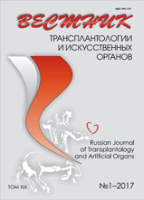
Vestnik Transplantologii i Iskusstvennyh Organov
Scope & Guideline
Pioneering research for a healthier tomorrow.
Introduction
Aims and Scopes
- Transplantation Techniques and Outcomes:
The journal emphasizes the latest surgical techniques, outcomes, and innovations in organ transplantation, including heart, kidney, liver, and lung transplants. - Artificial Organ Development:
There is a significant focus on the creation and optimization of artificial organs and tissue engineering, highlighting advancements in biocompatibility and functional integration. - Regenerative Medicine:
Research in regenerative medicine is a core area, with studies on stem cells, tissue engineering, and cellular therapies aimed at improving transplant outcomes. - Immunology and Rejection Mechanisms:
The journal discusses immunological factors influencing transplant success, including rejection mechanisms and the use of immunosuppressive therapies. - Ethics and Policy in Organ Donation:
The journal also addresses ethical considerations and policy developments surrounding organ donation and transplantation practices, particularly within the Russian Federation.
Trending and Emerging
- Machine Perfusion Techniques:
There is an increasing emphasis on machine perfusion techniques, particularly for organ preservation and transplantation, which is seen as a critical area for improving graft outcomes. - 3D Bioprinting and Tissue Engineering:
The journal is seeing a rise in research focusing on 3D bioprinting technologies for creating complex tissue structures, which could revolutionize organ transplantation. - Long-Term Outcomes and Quality of Life Studies:
Emerging research is focusing more on long-term patient outcomes and quality of life post-transplant, reflecting a holistic approach to transplant medicine. - Nanotechnology in Transplantation:
The application of nanotechnology in improving biocompatibility and reducing rejection rates in transplant procedures is gaining traction among recent publications. - Personalized Medicine in Transplant Protocols:
There is a trend towards personalized medicine, with studies exploring tailored immunosuppressive regimens based on genetic and phenotypic patient factors.
Declining or Waning
- Traditional Organ Preservation Techniques:
There is a noticeable decrease in papers discussing conventional organ preservation methods, as the field shifts towards more innovative techniques like hypothermic machine perfusion. - Clinical Case Reports:
The number of clinical case reports has declined, indicating a potential shift towards more systematic reviews and experimental studies rather than individual case analyses. - Basic Science Studies Without Clinical Relevance:
Research that does not directly translate into clinical applications or innovations in transplantation is less frequently featured, as the journal prioritizes studies with clear clinical implications.
Similar Journals
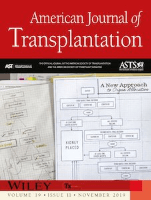
AMERICAN JOURNAL OF TRANSPLANTATION
Exploring breakthroughs in organ transplantation and immunology.American Journal of Transplantation, published by Elsevier Science Inc, is a premier academic journal dedicated to the critical field of transplantation. With an impressive impact factor and prestigious rankings in Immunology and Allergy, Pharmacology (medical), and Transplantation, it stands as a leading source of high-quality research in these domains, boasting a Q1 category status since 2023. The journal serves an essential role in advancing scientific knowledge and clinical practices, publishing cutting-edge studies that address pressing issues in organ transplantation and immunology. Researchers, healthcare professionals, and students will find valuable insights through rigorous peer-reviewed articles that focus on innovative methodologies, outcomes, and the latest developments within transplantation science. As the journal continues to evolve from its inception in 2001 to its ongoing contributions through 2024, it remains a key resource for those looking to stay at the forefront of transplantation research and practice.
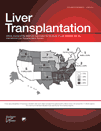
LIVER TRANSPLANTATION
Exploring New Horizons in Hepatic Care.LIVER TRANSPLANTATION, published by Lippincott Williams & Wilkins, stands at the forefront of hepatology and transplantation research, with a prestigious Q1 rating across the categories of Hepatology, Surgery, and Transplantation as of 2023. Since its inception in 2000, this journal has been dedicated to disseminating high-quality, cutting-edge research that advances the understanding and practice of liver transplantation. With an impressive ranking of 23rd out of 551 in Surgery and 9th out of 54 in Transplantation, it occupies an esteemed position in the academic landscape, attracting contributions from leading experts in the field. The journal's rigorous peer-review process ensures the publication of impactful studies, innovative clinical practices, and vital insights into patient management. By fostering a collaborative environment for researchers, clinicians, and students alike, LIVER TRANSPLANTATION serves as an essential resource for those engaged in the complexities of liver transplantation and related fields. Join the community committed to advancing liver health and transplantation science.

Progress in Transplantation
Fostering Collaboration for Transplantation BreakthroughsProgress in Transplantation is a leading journal published by SAGE Publications Inc, focusing on the dynamic field of transplantation medicine. With an ISSN of 1526-9248 and E-ISSN 2164-6708, this journal serves as a crucial platform for researchers and clinicians aiming to share cutting-edge findings and advancements in organ transplantation. Despite not being an Open Access journal, it provides a significant contribution to the academic community, evidenced by its placement in the Q3 category of Transplantation for 2023 and its ranking of #33 out of 54 in Scopus, showcasing a percentile standing of 39th. Progress in Transplantation has been dedicated to publishing high-quality research since its inception in 2000, and it continues to be a vital resource for those seeking to enrich their knowledge and foster innovation within the field of transplantation, fostering collaboration among practitioners, researchers, and students alike.

Current Transplantation Reports
Empowering Healthcare Through Transplantation KnowledgeCurrent Transplantation Reports, published by SpringerNature, is a leading journal in the field of transplantation science, offering vital insights into the cutting-edge developments in transplant medicine and related disciplines. With an impressive array of quartile rankings, including Q2 in Nephrology and Transplantation, and Q3 in Hepatology and Immunology for 2023, this journal plays a significant role in bridging research and clinical practice. Focused on fostering innovation, the journal spans a wide spectrum of topics, from surgical advances to immunological considerations of transplant procedures. It serves as an invaluable resource for researchers, healthcare professionals, and students interested in the latest advancements and data in transplantation, recognizing the importance of disseminating knowledge in this evolving field. Although currently not designated as Open Access, it provides rigorous peer-reviewed articles that contribute to the academic community's understanding of transplantation scenarios and challenges faced in clinical settings.

ARTIFICIAL ORGANS
Elevating Knowledge in Artificial Organ Technologies.ARTIFICIAL ORGANS is a leading academic journal published by Wiley, focusing on the interdisciplinary fields of bioengineering, biomaterials, and biomedical engineering. Established in 1977 and continuing through 2024, this journal plays a pivotal role in advancing research related to artificial organs and their impact on healthcare innovations. With an impressive impact factor and notable Q2 rankings across multiple categories, including Medicine and Biomedical Engineering, ARTIFICIAL ORGANS caters to a global audience of researchers, professionals, and students devoted to the latest developments in organ replacement and regenerative medicine. Although not an open-access journal, it maintains a rich repository of essential research articles, reviews, and case studies that collectively enhance the scientific community's understanding of artificial organ technologies. By publishing high-quality, peer-reviewed content, ARTIFICIAL ORGANS remains a vital source for emerging knowledge and collaborations in the exciting field of artificial organ research.
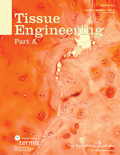
Tissue Engineering Part A
Transforming Laboratory Discoveries into Clinical SolutionsTissue Engineering Part A is a prestigious peer-reviewed journal published by MARY ANN LIEBERT, INC that focuses on innovative research and advancements within the field of tissue engineering and regenerative medicine. Since its inception in 2008, this journal has played a critical role in disseminating cutting-edge findings that bridge the gap between laboratory research and clinical application, underscoring its significance in the scientific community. With a diverse scope encompassing biochemistry, bioengineering, biomaterials, and biomedical engineering, the journal ranks notably in the Scopus database, holding a Q2 quartile status across multiple categories, thus reflecting its high impact on ongoing research and professional practice. For researchers, professionals, and students, Tissue Engineering Part A serves as an invaluable resource, offering insights into the latest methodologies and breakthroughs that drive the future of healthcare and therapeutic strategies. While primarily a subscription-based journal, it ensures that vital research is accessible to a broad audience of scientists and engineers committed to advancing the life sciences.
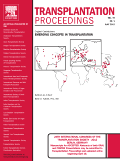
TRANSPLANTATION PROCEEDINGS
Advancing the Frontiers of Transplant Medicine.TRANSPLANTATION PROCEEDINGS is a distinguished journal published by Elsevier Science Inc, focused on the field of transplantation and surgery. With a publication history spanning over five decades, from 1969 to 2024, this journal has consistently provided a platform for researchers and practitioners to share significant findings and advancements in organ transplantation and related surgical techniques. The journal is renowned for its rigorous peer-review process and has achieved a respectable impact factor within its categories, ranking in the Q3 quartile for both Surgery and Transplantation as of 2023. With Scopus rankings placing it in the 47th percentile in Medicine (Surgery) and the 43rd percentile in Medicine (Transplantation), TRANSPLANTATION PROCEEDINGS serves as a vital resource for academics and medical professionals seeking to stay updated on the latest empirical research, clinical practices, and innovative methodologies in the field. While it does not operate under an open-access model, the journal ensures that critical insights and data are accessible to its audience, enhancing the global discourse in transplantation science. For those dedicated to advancing transplant medicine, this journal represents an invaluable collection of knowledge and a forum for fostering innovative approaches to improve patient outcomes.

Saudi Journal of Kidney Diseases and Transplantation
Connecting scholars to revolutionize kidney care.Saudi Journal of Kidney Diseases and Transplantation, published by Wolters Kluwer Medknow Publications, serves as a vital resource in the fields of nephrology and transplantation, dedicated to advancing the understanding and treatment of kidney diseases. With an ISSN of 1319-2442 and E-ISSN 2320-3838, this esteemed peer-reviewed journal aims to facilitate scholarly exchange and promote innovative research since its inception in 2006. Recognized for its Open Access model since 2007, it enables widespread dissemination of critical findings, thereby enhancing the global impact of kidney-related research. With a solid reputation reflected in its current Q3 categorization in both Nephrology and Transplantation for 2023, the journal continues to contribute meaningfully to these essential medical fields. Researchers, clinical professionals, and students can access its wealth of information to further their knowledge and practice in kidney health and organ transplantation, vital components in the landscape of modern medicine.
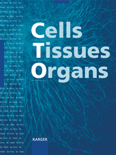
CELLS TISSUES ORGANS
Advancing the Frontiers of Cellular Science.CELLS TISSUES ORGANS is a renowned academic journal published by KARGER, focusing on pivotal research within the fields of Anatomy and Histology. Based in Switzerland, this journal has been disseminating influential scientific findings since 1889, contributing to our understanding of cellular structures and tissue functionality. With a current impact factor that places it in the Q2 quartile for both disciplines, it serves as a vital resource for researchers, professionals, and students seeking to stay abreast of significant advancements and discussions in these areas. The journal embraces an Open Access model, ensuring that high-quality, peer-reviewed articles are freely available, thus enhancing visibility and accessibility of critical research. As it continues to foster scholarly communication and innovation up to 2024, CELLS TISSUES ORGANS plays a crucial role in shaping the future of biological sciences and medical research.
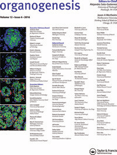
Organogenesis
Shaping the Future of Biomedical Engineering and Transplantation.Organogenesis is a leading journal published by Taylor & Francis Inc, dedicated to advancing the field of developmental biology and regenerative medicine. With an ISSN of 1547-6278 and E-ISSN 1555-8592, this journal spans an extensive research scope that includes embryology, transplantation, and biomedical engineering, distinguishing itself as a crucial platform for researchers and practitioners alike. Its impact is reflected in its performance across various categories in 2023, earning Q3 rankings in Biomedical Engineering and Embryology, Q4 in Developmental Biology, and Q2 in Transplantation, showcasing its reputable standing among peer journals. Moreover, with Scopus rankings indicating strong positioning in the fields of medicine and biochemistry, Organogenesis is essential for those looking to publish or stay updated on pioneering research. The journal facilitates rigorous peer-review and offers a forum for disseminating innovative findings, making it an invaluable resource for academics, professionals, and students committed to understanding the complexities of organism development.